$2,700.00 – $8,000.00
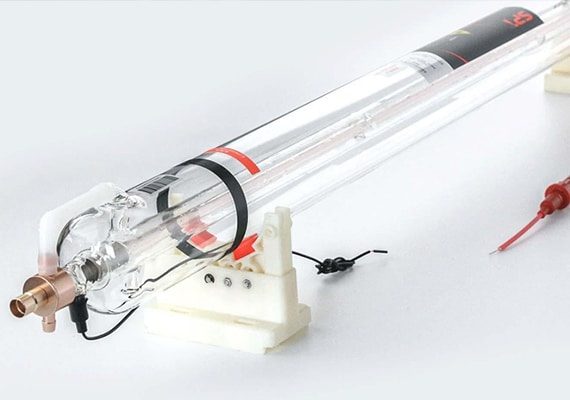
The machine is equipped with a powerful CO2 laser tube, which can provide precise and efficient cutting and engraving performance on various materials, including acrylic, wood, leather, fabric, glass, and so on. A high-powered laser tube ensures clean, precise cuts and smooth edges, while also enabling detailed engraving, making it suitable for intricate designs and industrial applications.
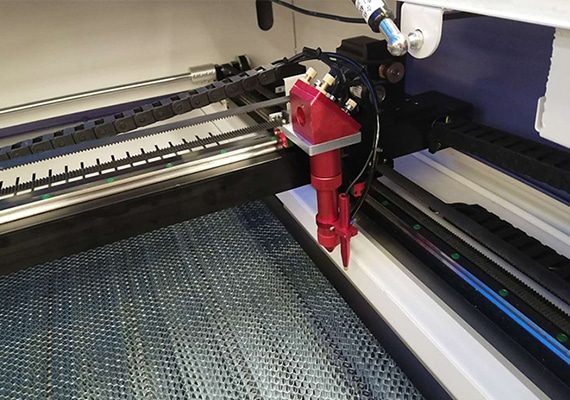
The high-precision CO2 laser head is selected, and it has a red dot positioning function to ensure that the laser beam is precisely aligned with the focusing optics and the nozzle. An accurate laser beam contributes to consistent and uniform cutting results. Additionally, the CO2 laser head is equipped with height control, which ensures consistent focus and compensates for any variations in material thickness or uneven surfaces.
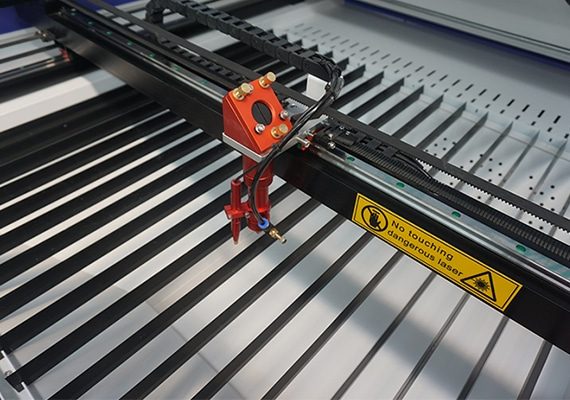
The machine is equipped with an advanced motion system to ensure smooth and accurate movement of the laser head during cutting and engraving. This precise motion control enables clean, sharp cuts while also enabling detailed and intricate engraving on a variety of materials.
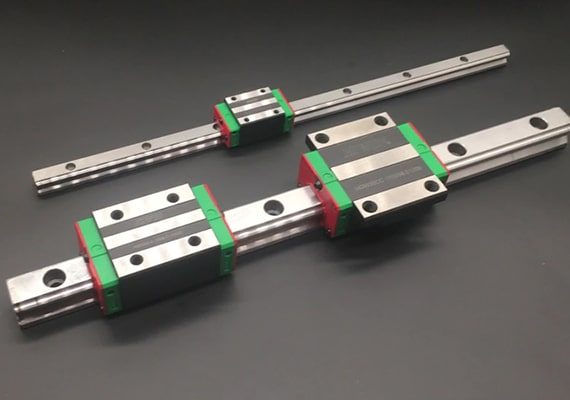
The machine is equipped with a Taiwan HIWIN guide rail with excellent precision. HIWIN is manufactured to tight tolerances, ensuring smooth and stable linear motion. This level of precision contributes to accurate and consistent laser cutting, especially when working with intricate designs and fine details. In addition, HIWIN rails are designed to minimize friction, resulting in smooth and quiet movement.
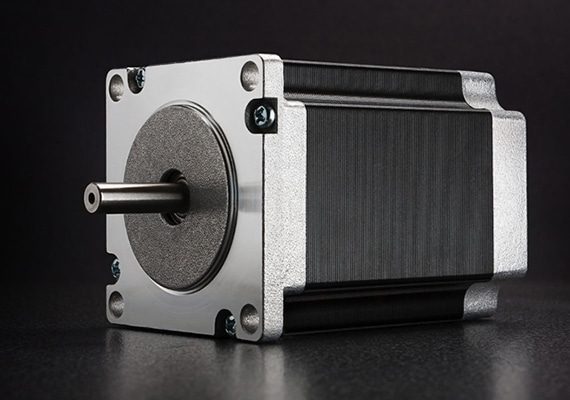
The machine adopts a stepper motor with strong power and reliable performance to ensure the normal operation of the machine. Not only are stepper motors cost-effective, but they also provide precise control of moving parts, ensuring high-quality laser cutting and stable positioning of optical components for reliable, efficient operation.
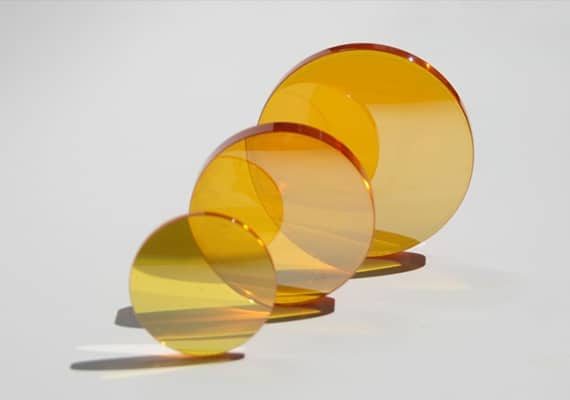
The machine is equipped with high-quality optics capable of producing a narrower, more stable laser beam, ensuring precise cutting paths and cleaner edges even on complex designs and delicate materials. In addition, high-quality optics help reduce beam divergence and losses, thereby improving energy efficiency.
| Model | AKJ-6040 | AKJ-6090 | AKJ-1390 | AKJ-1610 | AKJ-1810 | AKJ-1325 | AKJ-1530 |
|---|---|---|---|---|---|---|---|
| Working Area | 600*400mm | 600*900mm | 1300*900mm | 1600*1000mm | 1800*1000mm | 1300*2500mm | 1500*3000mm |
| Laser Type | CO2 Laser | ||||||
| Laser Power | 80-300W | ||||||
| Power Supply | 220V/50HZ, 110V/60HZ | ||||||
| Cutting Speed | 0-20000mm/min | ||||||
| Engraving Speed | 0-40000mm/min | ||||||
| Min Line Width | ≤0.15mm | ||||||
| Position Accuracy | 0.01mm | ||||||
| Repetition Accuracy | 0.02mm | ||||||
| Cooling System | Water Cooling | ||||||
| Laser Power | Cutting Speed | 3mm | 5mm | 8mm | 10mm | 15mm | 20mm |
|---|---|---|---|---|---|---|---|
| 25W | Max Cutting Speed | 10~20mm/s | 5~10mm/s | 2~5mm/s | 1~3mm/s | 0.5~1mm/s | 0.3~0.8mm/s |
| Optimal Cutting Speed | 5~10mm/s | 3~6mm/s | 1~3mm/s | 0.5~2mm/s | 0.3~0.8mm/s | 0.2~0.5mm/s | |
| 40W | Max Cutting Speed | 20~30mm/s | 10~15mm/s | 4~8mm/s | 2~4mm/s | 1~2mm/s | 0.5~1mm/s |
| Optimal Cutting Speed | 10~15mm/s | 5~10mm/s | 2~4mm/s | 1~2mm/s | 0.5~1mm/s | 0.3~0.8mm/s | |
| 60W | Max Cutting Speed | 30~40mm/s | 15~20mm/s | 6~10mm/s | 3~6mm/s | 1.5~3mm/s | 1~1.5mm/s |
| Optimal Cutting Speed | 15~20mm/s | 8~12mm/s | 3~6mm/s | 1.5~3mm/s | 1~1.5mm/s | 0.5~1mm/s | |
| 80W | Max Cutting Speed | 40~50mm/s | 20~25mm/s | 8~12mm/s | 4~8mm/s | 2~4mm/s | 1~2mm/s |
| Optimal Cutting Speed | 20~25mm/s | 10~15mm/s | 4~8mm/s | 2~4mm/s | 1~2mm/s | 0.5~1mm/s | |
| 100W | Max Cutting Speed | 50~60mm/s | 25~30mm/s | 10~15mm/s | 5~10mm/s | 2.5~5mm/s | 1~2.5mm/s |
| Optimal Cutting Speed | 25~30mm/s | 12~18mm/s | 5~10mm/s | 2.5~5mm/s | 1~2.5mm/s | 0.5~1.5mm/s | |
| 130W | Max Cutting Speed | 60~70mm/s | 30~35mm/s | 15~20mm/s | 10~15mm/s | 5~10mm/s | 2.5~5mm/s |
| Optimal Cutting Speed | 30~35mm/s | 20~25mm/s | 10~15mm/s | 5~10mm/s | 2.5~5mm/s | 1~2.5mm/s | |
| 150W | Max Cutting Speed | 70~80mm/s | 35~40mm/s | 20~25mm/s | 15~20mm/s | 10~15mm/s | 5~10mm/s |
| Optimal Cutting Speed | 35~40mm/s | 30~35mm/s | 15~20mm/s | 10~15mm/s | 5~10mm/s | 2.5~5mm/s | |
| 180W | Max Cutting Speed | 80~90mm/s | 40~45mm/s | 25~30mm/s | 20~25mm/s | 15~20mm/s | 10~15mm/s |
| Optimal Cutting Speed | 40~45mm/s | 35~40mm/s | 20~25mm/s | 15~20mm/s | 10~15mm/s | 5~10mm/s | |
| 200W | Max Cutting Speed | 90~100mm/s | 45~50mm/s | 30~35mm/s | 25~30mm/s | 20~25mm/s | 15~20mm/s |
| Optimal Cutting Speed | 45~50mm/s | 40~45mm/s | 25~30mm/s | 20~25mm/s | 15~20mm/s | 10~15mm/s |
| Cutting Process | Laser Cutting | CNC Routing | Score and Snap | Saw Cutting |
|---|---|---|---|---|
| Precision | High | High | Moderate | Moderate |
| Cutting Speed | Fast | Moderate | Slow | Moderate |
| Intricate Cuts | Excellent | Excellent | Limited | Limited |
| Heat Generation | May Cause Melting and Discoloration At Edges | No Heat Generation | Minimal Risk of Heat Buildup | Heat Generated Can Cause Melting or Cracking |
| Material Waste | Minimal | Minimal | Moderate | Moderate |
| Expertise Needed | Specialized Knowledge | Programming and Setup Required | Minimal | Moderate |
| Edge Quality | Clean, Minimal Melting | Clean, Minimal Melting | Rough At Score Line | May Require Finishing |
| Material Versatility | Can Cut Various Materials | Can Handle A Variety of Materials | Limited to Polycarbonate | Can Handle Various Thicknesses |
| Setup Time | Moderate | Moderate | Minimal | Minimal |
| Safety | Eye Protection Required | Eye Protection Required | Minimal Protection | Eye and Hand Protection |
| Cost-Effectiveness | Expensive | Can Be Expensive for Small Projects | Inexpensive | Moderate |
| Suitable for Thick Sheets | Yes | Yes | Limited to Thin Sheets | Yes |
| Noise | Low | Moderate | Low | High |
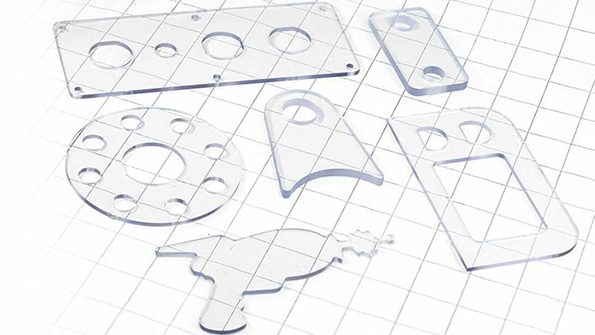
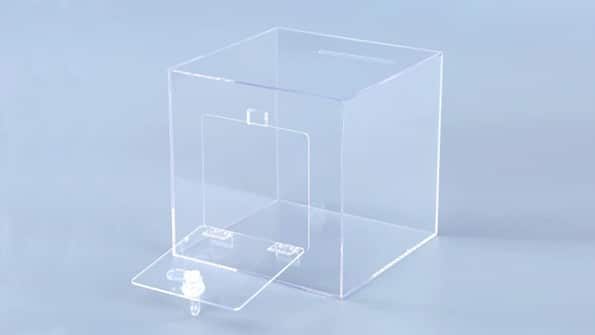
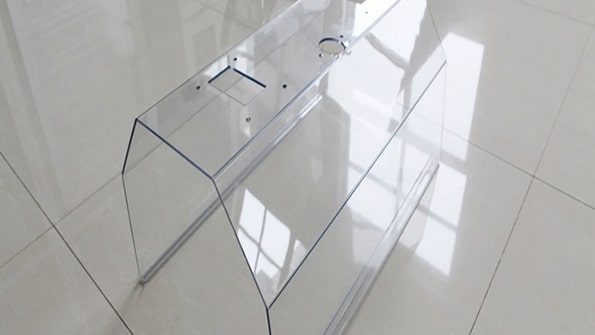
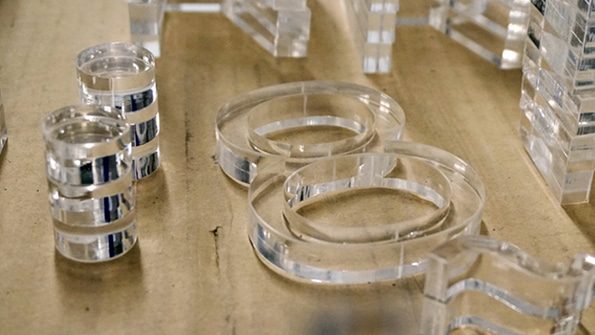
Yes, polycarbonate can be cut with a laser. Laser cutting is a popular and effective method of cutting polycarbonate sheets. Polycarbonate is particularly suitable for laser cutting due to its transparency, impact resistance, and relatively low melting point compared to other plastics.
Laser cutting involves using a high-energy laser beam to melt, vaporize, or burn through the material along a predetermined path. A focused laser beam heats the material at the cutting point, causing it to melt or vaporize and create an incision. The precision and accuracy of laser cutting make it ideal for creating intricate designs, shapes, and patterns on polycarbonate sheets.
Laser cutting offers advantages such as high precision, complex designs, minimal tool wear, and reduced material waste. However, when laser cutting polycarbonate, it is important to have the right equipment, expertise, and safety measures in place to achieve the desired results while ensuring safety and quality.
Yes, polycarbonate does expand when heated. Like most materials, polycarbonate thermally expands as temperature increases. This means that when polycarbonate is exposed to higher temperatures, its molecules become more dynamic and move more freely, causing the material to increase in size.
The degree of expansion depends on the material’s coefficient of thermal expansion (CTE), which is a measure of how much a material’s dimensions change with temperature. The degree of thermal expansion of polycarbonate is affected by factors such as the specific grade of polycarbonate, its initial temperature, and the temperature changes it experiences. When polycarbonate is heated, the molecular bonds within the material vibrate more violently, causing the material molecules to move farther apart, causing expansion.
When using polycarbonate in applications with significant temperature changes, it is important to consider thermal expansion. This is especially important in construction, as polycarbonate sheets may be used in glazing systems that experience temperature changes. Proper design and installation techniques can help accommodate thermal expansion and prevent issues such as warping or structural damage.
Yes, polycarbonate can crack when laser cutting if proper precautions are not taken. Polycarbonate is a thermoplastic material with a relatively low melting point and is sensitive to heat. When exposed to the intense heat generated by a laser cutting machine, it can melt, warp, or even crack if cutting conditions are not properly controlled.
While polycarbonate can be laser-cut, there is a risk of cracking if proper precautions are not taken. By adjusting laser power, and cutting speed, and using proper techniques such as air assist and masking, it is possible to minimize the possibility of breakage and achieve clean, precise cuts on polycarbonate sheets. If you do not have experience laser cutting polycarbonate, it is best to consult a professional with expertise in working with this material on a laser cutting machine.
Polycarbonate is a thermoplastic material that can be laser-processed to a certain extent. Laser processing of polycarbonate involves using a high-energy laser beam to cut, engrave, or mark the material. However, the laser processing performance of polycarbonate depends on several factors, including the specific type of laser used, the thickness of the material, and the desired results.
Polycarbonate has some properties that make it ideal for laser processing:
It is worth noting that different laser systems and techniques may have varying degrees of success in processing polycarbonate. Laser parameters such as power, speed, focal length, and beam focus need to be optimized for the specific task at hand. If you are considering laser processing polycarbonate for a specific application, it is recommended that you consult with a specialist who specializes in laser processing or with a laser cutter manufacturer to determine the best method and equipment for your needs.
Laser-cutting polycarbonate sheeting involves using a laser beam to vaporize or melt the material along a predetermined path to create precise and clean cuts. Here is a step-by-step guide on how to laser cut polycarbonate sheet:
The exact steps and settings may vary, depending primarily on the type and model of laser you are using. Always refer to the manufacturer’s guidelines and recommendations for your specific laser cutting machine and polycarbonate material, and take proper safety precautions throughout the cutting process.
Laser-cutting polycarbonate is safe if proper precautions are taken and the properties of the material are carefully considered when proceeding with the process. However, to ensure a safe polycarbonate laser-cutting process, there are some important considerations to keep in mind:
By following these safety precautions and guidelines, you can minimize the risks associated with laser-cutting polycarbonate and ensure a safe working environment for your operators and equipment. If you are new to laser cutting or working with new materials, consider seeking guidance from an experienced professional or laser cutting safety expert.
Laser-cutting acrylic and polycarbonate are two common processes for manufacturing a variety of products and components. While both materials are clear plastics, they have different properties that affect how they can be cut with a laser. Here are the main differences between laser-cut acrylic and polycarbonate:
In conclusion, while both acrylic and polycarbonate can be laser cut, polycarbonate presents unique challenges due to its higher melting point and toughness. Acrylic is generally easier and cleaner to cut, while laser cutting polycarbonate requires careful tuning of parameters to avoid issues such as warping or cracking. It is important to follow the manufacturer’s guidelines, perform test cuts, and have experience with the specific properties of each material to achieve the best cutting results.
Laser-cutting polycarbonate can have an environmental impact due to the fumes and particles released during the cutting process. Polycarbonate is a thermoplastic material that can emit fumes and volatile organic compounds (VOCs) when exposed to high temperatures, such as those produced by CO2 laser-cutting machines. These emissions contribute to air pollution and negatively impact indoor and outdoor air quality. Here are some environmental considerations to keep in mind when laser cutting polycarbonate:
To minimize potential environmental hazards when laser cutting polycarbonate, consider the following:
Laser-cutting polycarbonate may have an environmental impact by releasing fumes and particles. By implementing proper ventilation, air filtration, and responsible waste management practices, you can help mitigate these effects and ensure that your laser-cutting operations are conducted in an environmentally responsible manner. If you are still concerned about the environmental impact of the laser cutting process, it is recommended to consult with environmental experts and regulatory agencies to ensure compliance and minimize hazards.
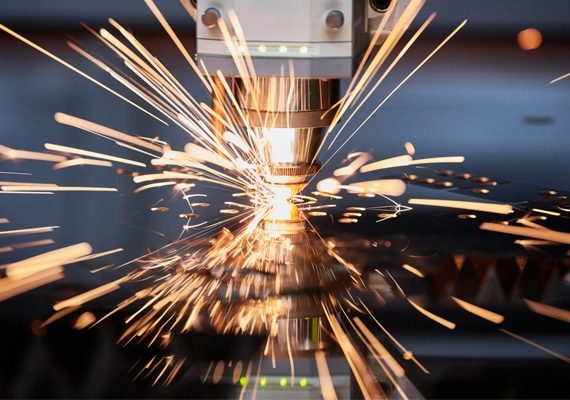
With years of experience in laser cutting technology, we have honed our expertise to provide cutting-edge solutions tailored to your unique needs. Our team of skilled engineers and technicians has the in-depth knowledge to ensure you get the perfect laser-cutting machine for your specific application.
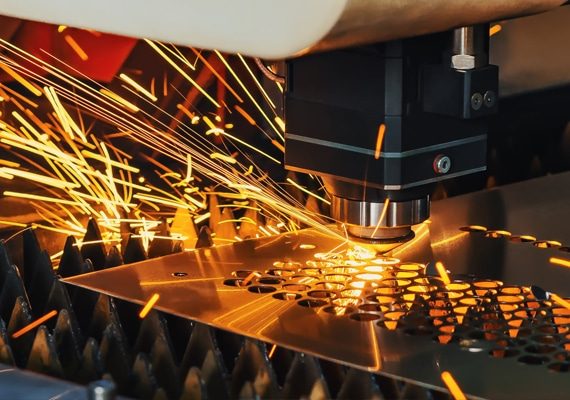
At AccTek Laser, we build strong relationships with our clients. Our dedicated support team provides prompt assistance and after-sales service to keep your laser-cutting machine running at its best for years to come. Your satisfaction is our top priority and we will help you every step of the way.
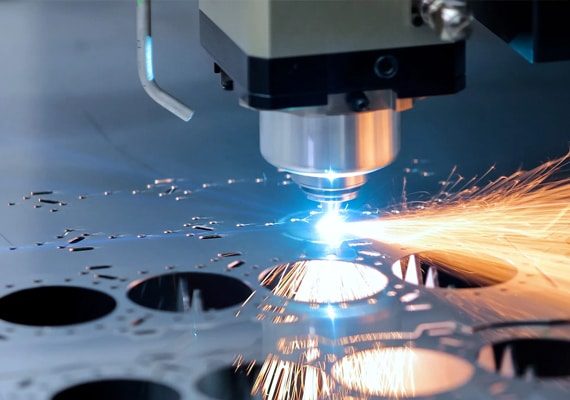
Quality is the cornerstone of our manufacturing process. Every laser-cutting machine is rigorously tested and adheres to strict quality control standards, ensuring that the product you receive meets the highest industry benchmarks. Our dedication to quality ensures you get a machine that performs consistently and delivers perfect cuts every time.
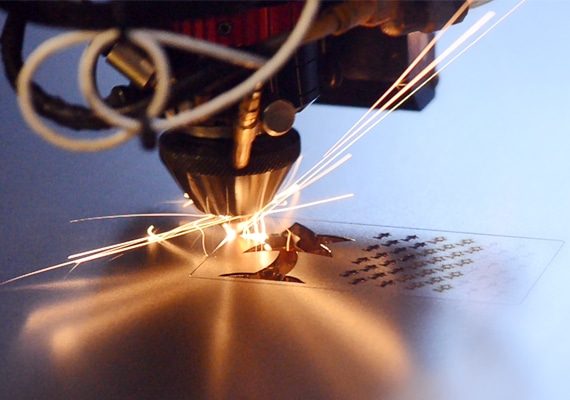
We understand the importance of cost efficiency in today’s competitive landscape. Our laser-cutting machines can provide excellent value for your investment, minimizing downtime and reducing operating costs while maximizing productivity and efficiency.
4 reviews for Polycarbonate Laser Cutting Machine
Nora –
High-quality craftsmanship with our CO2 laser cutter. It’s reliable, and versatile, and enhances the overall efficiency of our operations.
Tommaso –
Reliable performance from our laser machine. Its precision and speed contribute to the seamless execution of our projects.
Saud –
The exceptional value proposition with our CO2 laser cutter. It’s durable, efficient, and exceeds our expectations in terms of performance.
Ahmed –
Impressive cutting capabilities from our laser cutting machine. It’s fast, accurate, and provides outstanding results consistently.